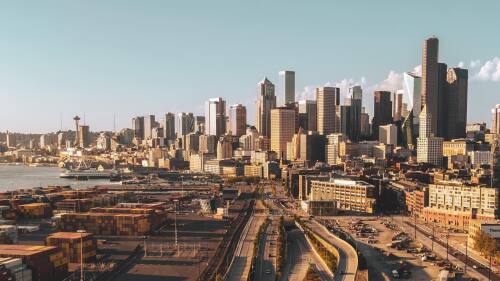Hold off that honking, humans — artificial intelligence may soon help Seattle relieve traffic congestion.
We’re the first city in the US to partner with Google on Project Green Light, an initiative that uses Google Maps and real-time data to improve intersections where the traffic light timing is off.
The pilot program began in late 2022. Since then, signal timing has been adjusted at intersections in Ballard and Greenwood, and the Seattle Department of Transportation (SDOT) is looking to expand its use in 2024.
How does it work?
There are more than 1,000 traffic signals in Seattle and ~75% of them are adjusted remotely from a Traffic Operations Center. SDOT uses sensors, software, and other methods to program the lights, taking into account factors like the length of crossings and time of day (during off-peak hours, traffic signals turn over more regularly).
But the Google collab gives SDOT another tool for their toolbox. Project Green Light’s AI can process thousands of intersections at once and send suggestions instantaneously on how to make sure an intersection isn’t causing backups. Implementing a suggestion from Google can take as little as five minutes.
Green all the way around
Improving traffic flow through Project Green Light could not only save a few headaches, it aims to be environmentally friendly. Researchers have found that airborne pollution is 29 times higher at city intersections than on open roads — and a lot of harmful particles come from cars accelerating after stopping.
Google said its pilot program — which has been working in 12 other cities internationally — shows the potential to reduce lower gas emissions by 10%, which would align with Seattle’s stated carbon reduction goals.
SDOT announced recently it will continue to partner with Project Green Light this year and plans to implement recommendations for SODO next.











